Dry Tortugas National Park is a beautiful and fascinating place to visit. It is also perfect if you are looking for a secluded place to explore. As one of the world’s most remote national parks, the only way to access it is by boat or seaplane. During a visit to this special park, you can learn about how and why a fort was built here, what it is like to live on Dry Tortugas, and discover a variety of wildlife. Read on to learn more about this most unique National Park.
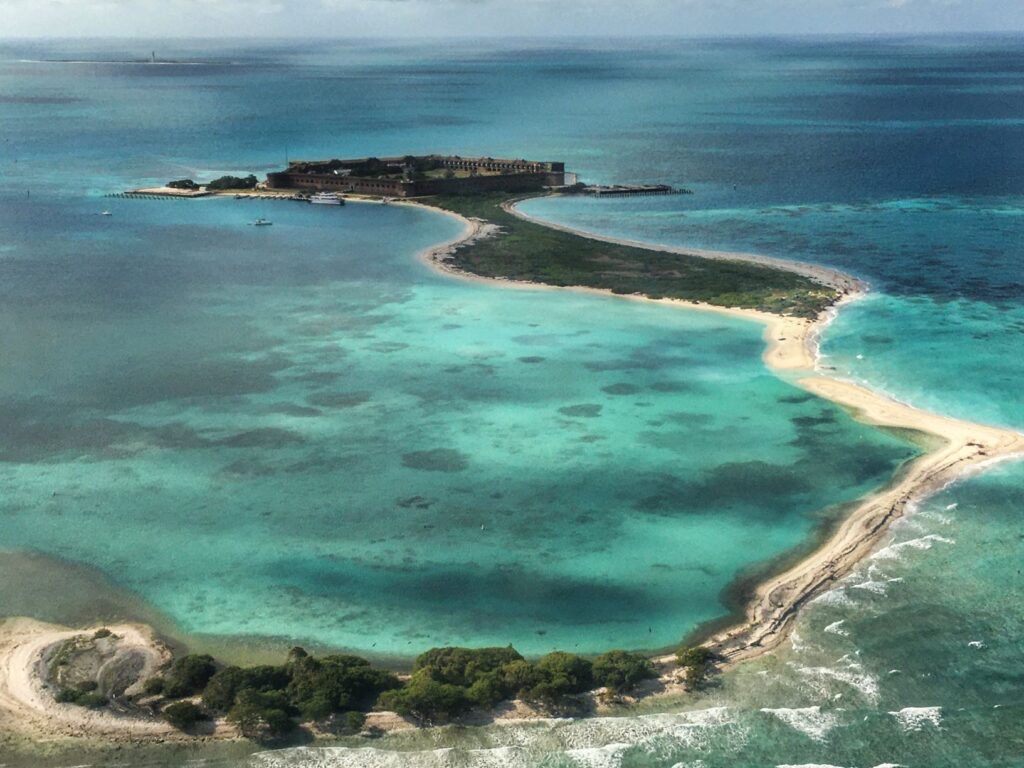
What are the Dry Tortugas?
The Dry Tortugas are a cluster of seven islands about 70 miles west of Key West, Florida. The islands, surrounding shoals, and water became a National Park in 1992 to protect its amazing bird and marine life, as well as its cultural and scenic value.
The area got its name from the Spanish explorers who found many sea turtles (tortugas) here. The word “Dry” was soon added to mariners’ charts to warn of the lack of freshwater.
Construction on Fort Jefferson began in 1846 so that the United States could control navigation to the Gulf of Mexico and protect Atlantic-bound Mississippi River trade. Even after 30 years of construction, the fort was never completed. Notably, it is the largest brick building in the western hemisphere with over 16 million bricks and covers 11 of the key’s 16 acres.
How do you get to Dry Tortugas National Park?
There are only 2 ways to get to Dry Tortugas: by boat or by seaplane. You can take a private boat or a ferry. If you decide to take a boat, it makes the trip a very long day. The trip by boat is about 2.5 hours each way. Instead, I highly recommend taking a seaplane flight. It is only a 45 minute flight and you enjoy amazing scenery on the way. The seaplanes typically fly at 500 feet above the ocean, allowing you to view ship wrecks and sea turtles.
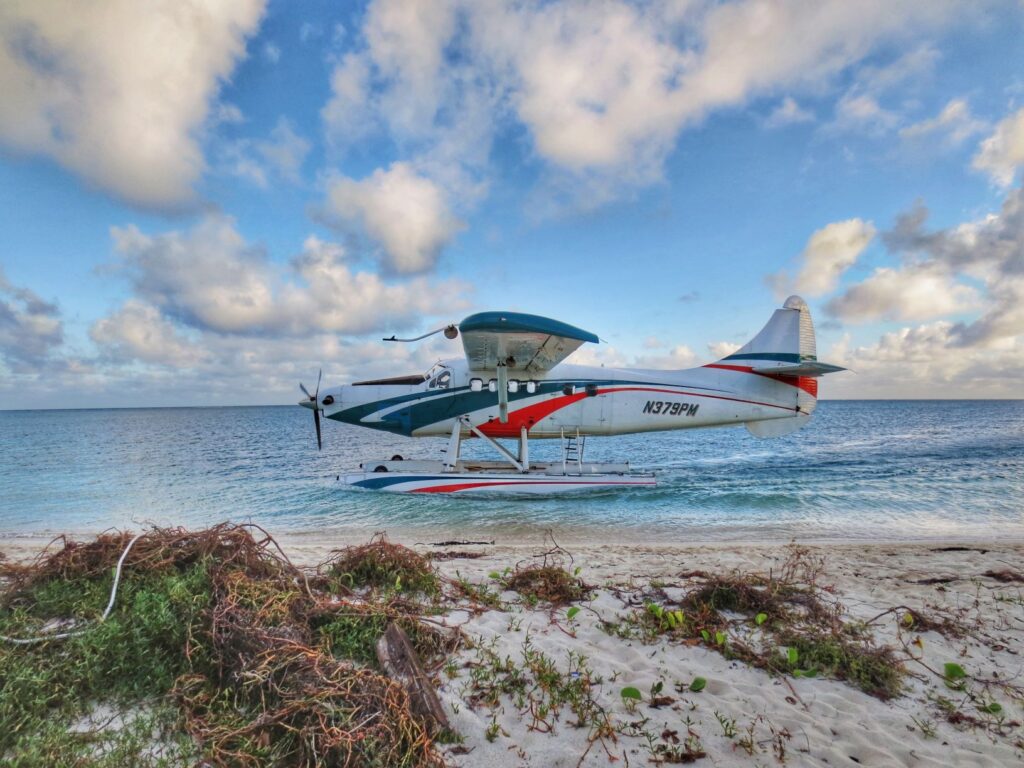
There is only one seaplane operator allowed to land at Dry Tortugas, so I highly recommend making reservations well in advance. I planned our trip about 2 months in advance and our preferred date and time was not available.
You have the option to either take a full-day (8 hours) or half-day (4 hours) excursion. We had plenty of time to explore with the half-day excursion. If you decide on the half-day option, the seaplane operator suggests going on the first flight in the morning or the last flight in the afternoon because you will be on the island before or after the ferry. This means there are less people on island. I definitely agree with this. We went on the 2 PM seaplane flight and there were about 30 people on the island (20 people on two seaplanes and the other people were camping overnight).
What to see on the flight to Dry Tortugas National Park
Everyone (10 passengers) on the seaplane gets a window seat. However, some seats are slightly better than others. The right side of the plane is recommended because you get better views of Dry Tortugas when you land. Also, if you want to take photos, I recommend not sitting in the second row because the wing strut can be an obstruction. Additionally, one lucky passenger gets the chance to sit next to the pilot! If you would like to get this seat, try to board the plane first.
Regardless of where you sit, the seaplane is an amazing experience and the scenery is stunning as the plane flies only 500 feet above the water. It is recommend to wear polarized sunglasses, as they cut the glare from the water, making it easier to spot sea turtles and sharks.
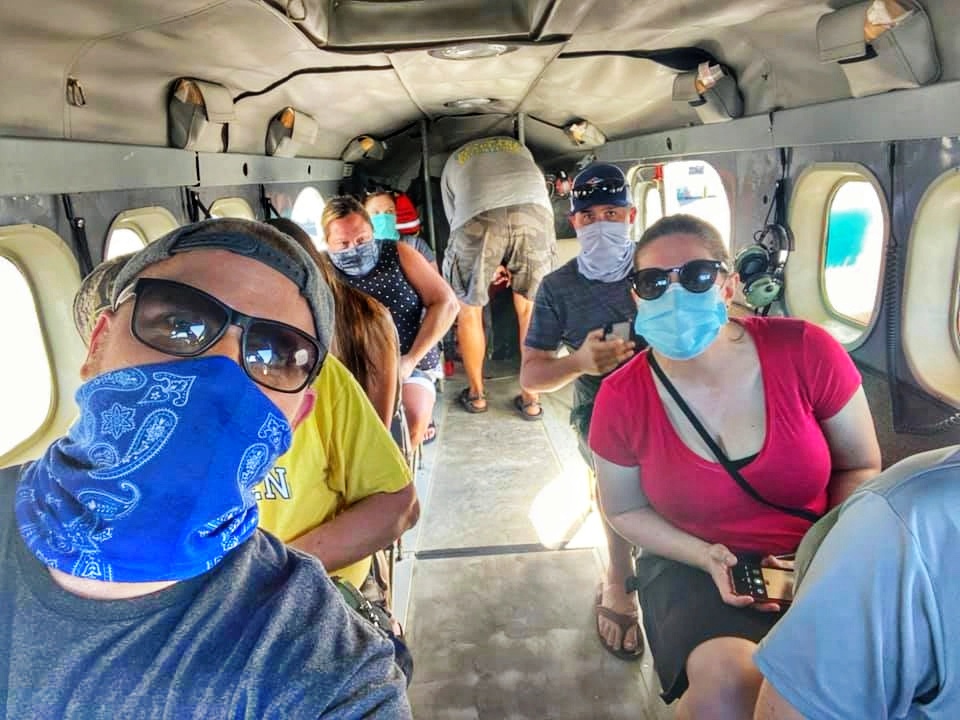
After departing Key West, the flight goes over the following points of interest:
- The “flats” – an area of very shallow water (3-5 feet). Sea life such as sharks and stingrays are easier to see in this area.
- Picturesque mangrove islands. One is a private residence.

- Marquesas Islands – coral atoll, likely created by wind and wave action
- “Quicksands” – a deep section of water, with depths of 30 feet. The area is like an underwater desert. The seabed consists of large sand dunes and is a good place to see sea turtles. This area is also where Mel Fisher found the treasures of the Spanish Galleons “Atocha” and “Margarita.”
- The mast of Mel Fishers 70 foot work vessel.
- The last part of the flight is over the deepest water (70 feet) but you can still spot sea turtles and sharks near the surface.
- The most impressive view is of Fort Jefferson before you land.

Things to explore at Dry Tortugas National Park
You will arrive at Garden Key by ferry or seaplane. It is the second largest island of the seven keys. Located on this key is the historic Fort Jefferson, park headquarters, visitor center, campgrounds, and great swimming and snorkeling areas.
East, Middle, Hospital, and Long Key are closed to the public. Bush Key can only be accessed seasonally due to birds breeding on the island. Additionally, sometimes shifting sands will remove the land bridge to Bush Key, so then it can only be accessed by kayak or canoe.
Loggerhead is the largest island and is the site of shipwrecks and a lighthouse. It is about 3 miles from Garden Key and is open for day use only. The only way to access this island is by private boat.
Fort Jefferson
Fort Jefferson is hexagonal building with 3 levels and over 2,000 archways. It has a fascinating history. There is a self-guided tour that takes about 45 minutes, during which you learn about the construction, what it was like living in the fort, and the role is played during the Civil War.
Please be careful when exploring the fort as there are no railings to stop you falling off the edge. Also, I would recommend insect repellent.
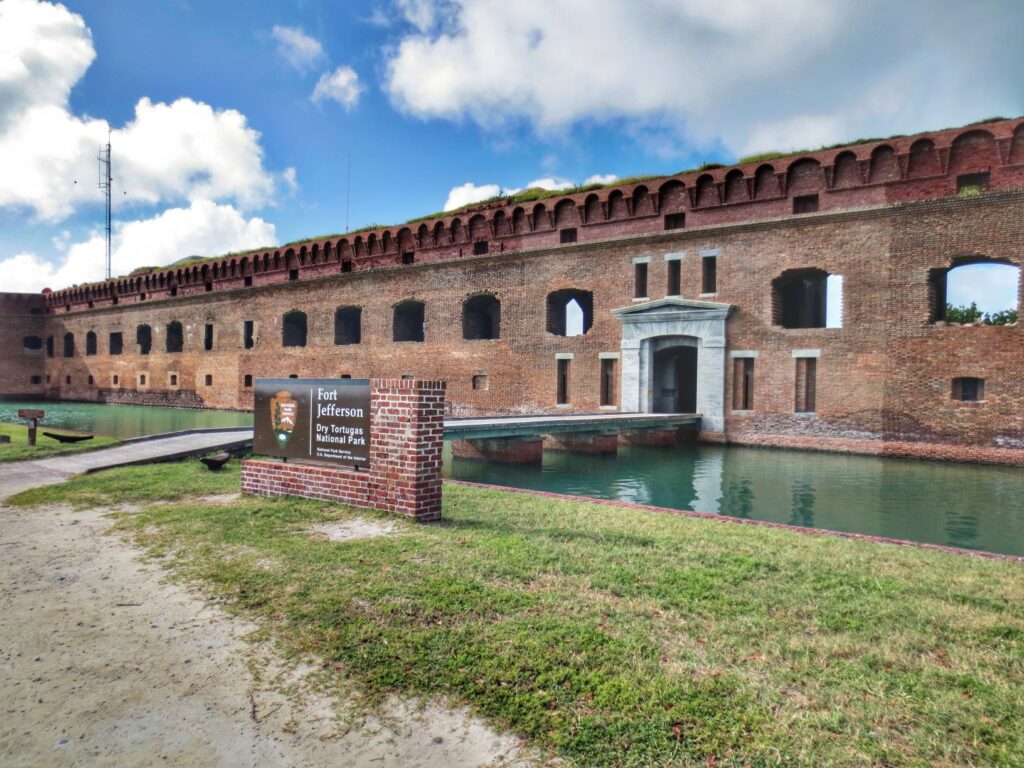
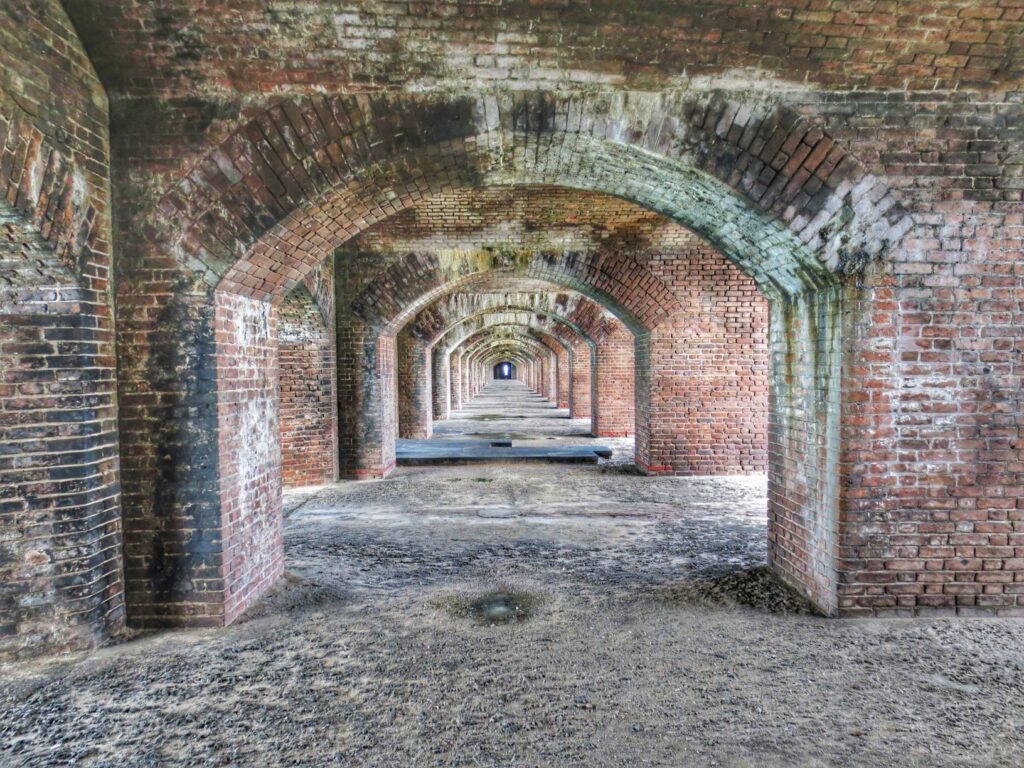
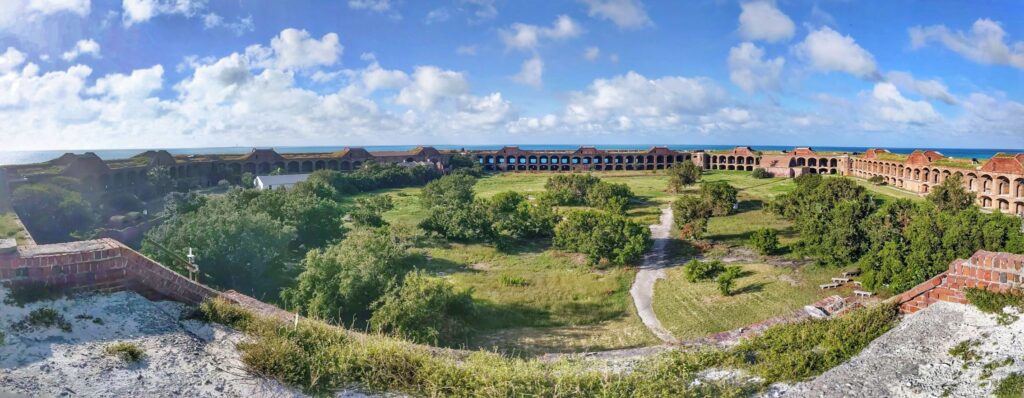
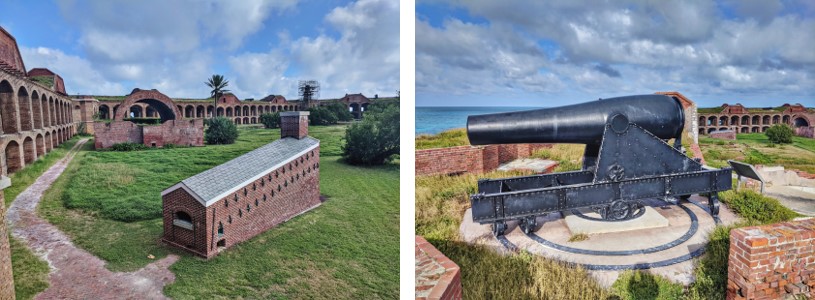

Snorkeling
Most of the National Park is underwater. The area features one of the best living coral reef systems which is part of the third-largest reef system in the world. It is easy to access the water from the main swim beach with its shallow water (4 to 7 feet). Unfortunately, when we visited the sea was a bit rough and the visibility was low, but we did see many fish along the moat wall.
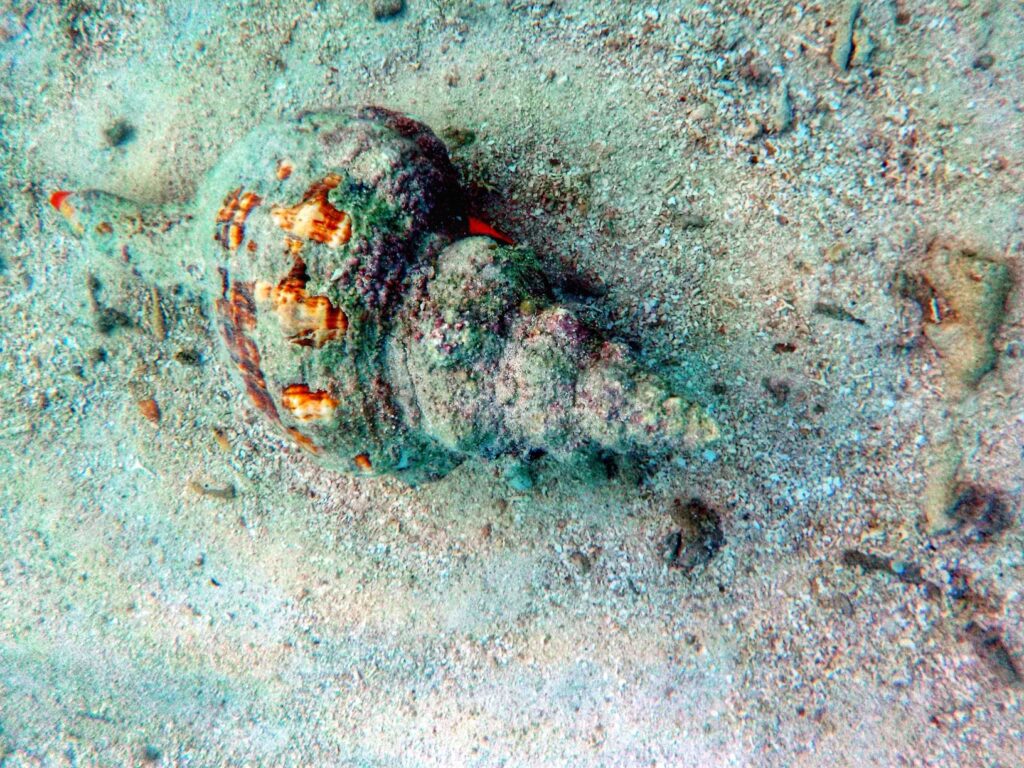
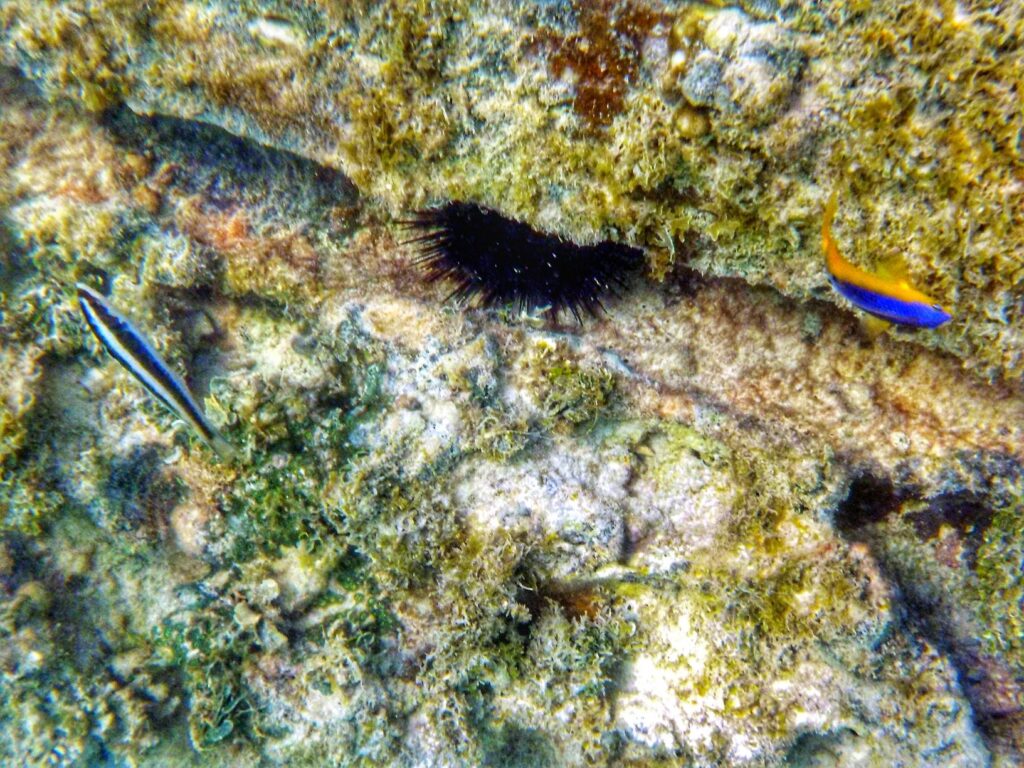

Bird watching
Dry Tortugas National Park is a great place to bird watch. There are about 300 species of bird that visit the park. The spring and fall migrations are the optimal times to visit as Dry Tortugas is a layover point for migrating birds.
A few species to keep an eye out for are the Frigate bird, brown noddy, masked booby, and Sooty terns. This is the only place the Sooty terns nest in the continental United States. Additionally, you may see rare species such as red-footed boobies, double-created cormorants, brown pelicans, and white-tailed tropicbirds.
Bush Key is only opened seasonally as this is where sooty terns and brown noddies make their nests between February and September.
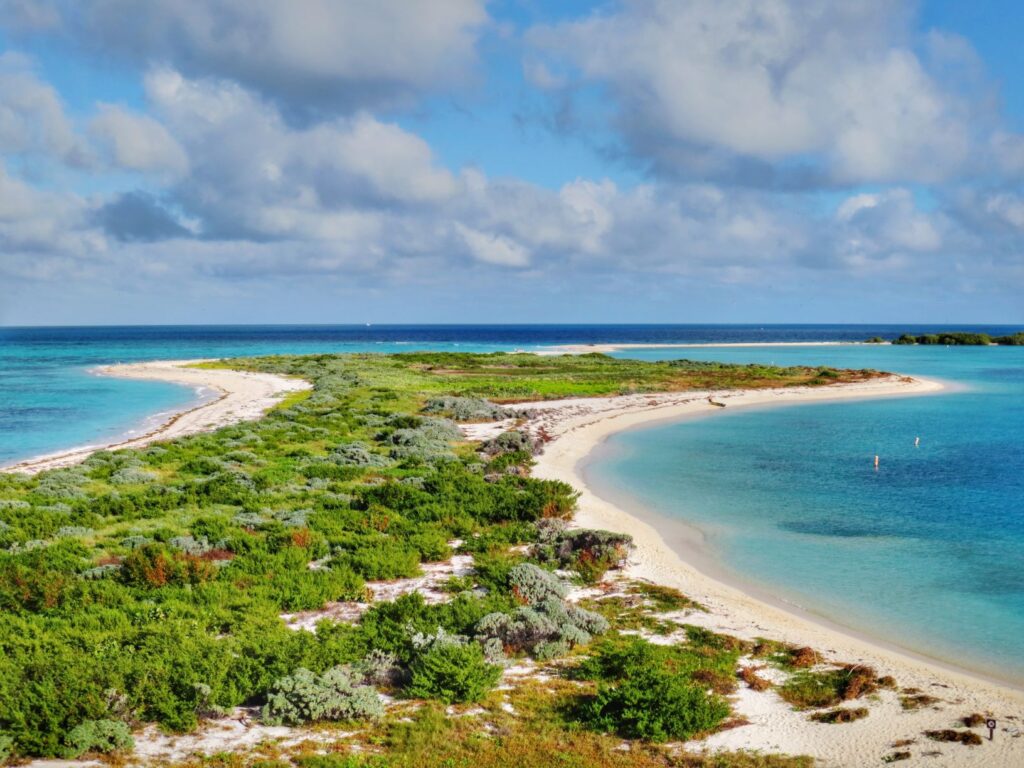
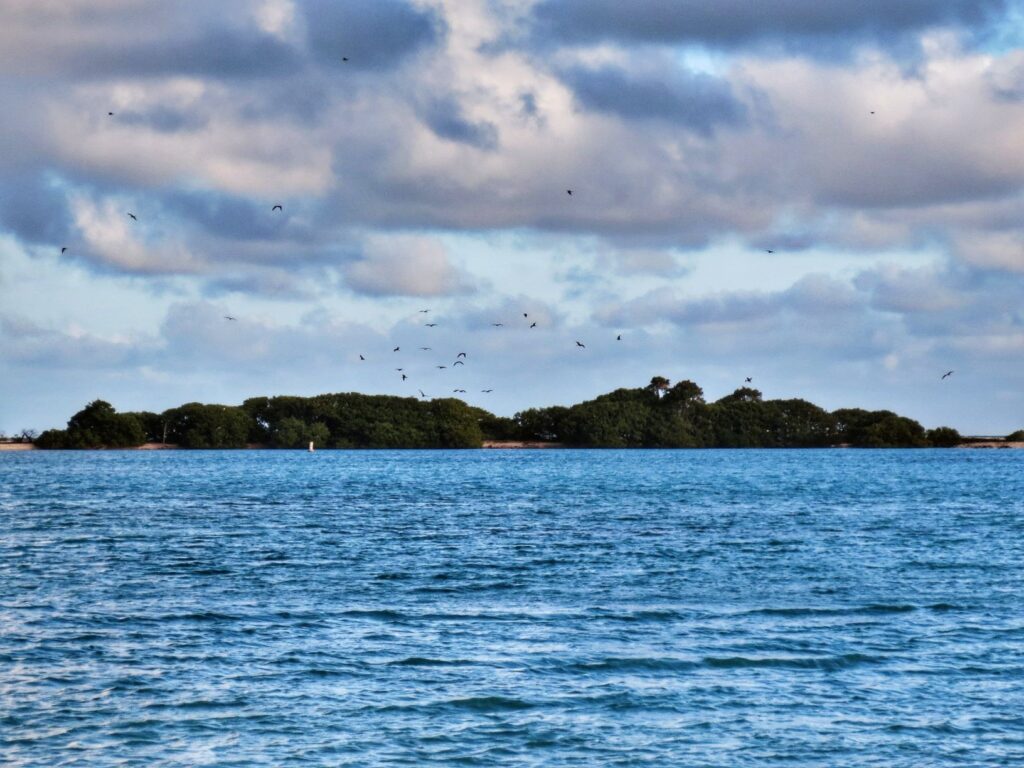
Are you interested in getting off the beaten path with a visit to Dry Tortugas National Park? Contact us today to start planning your trip! Consider staying at the luxurious and exclusive Sunset Key Cottages for your stay in Key West, Florida.
